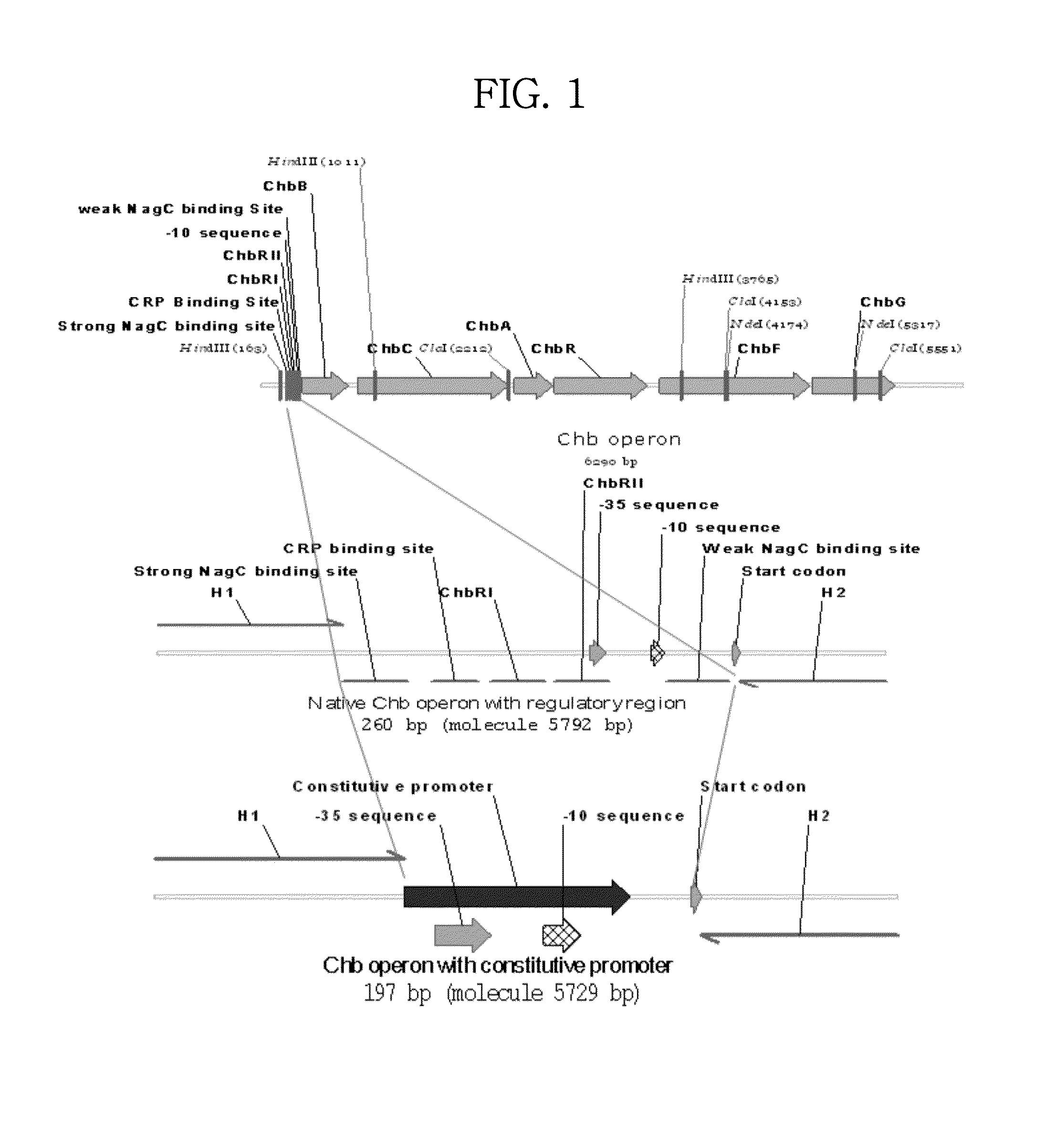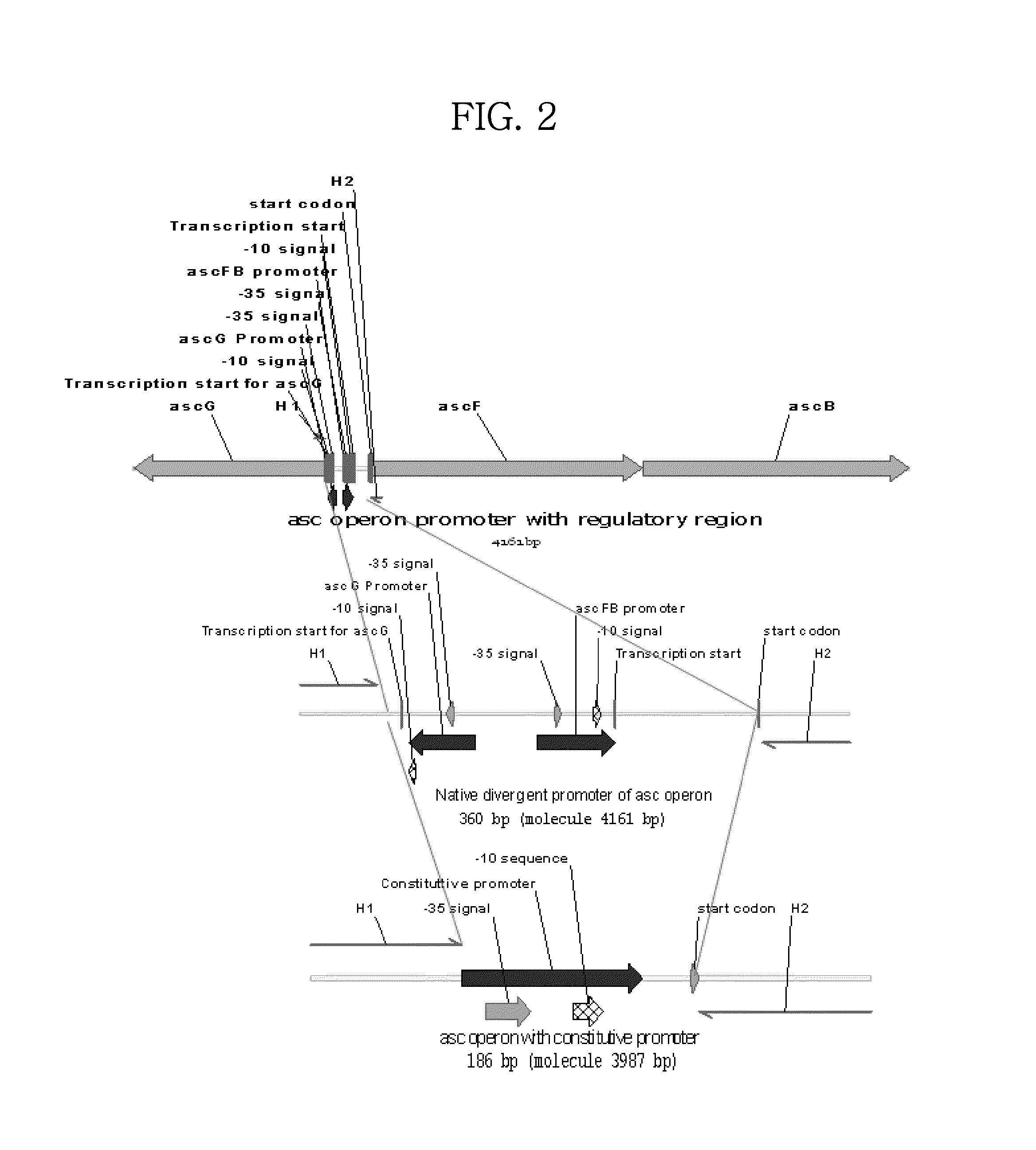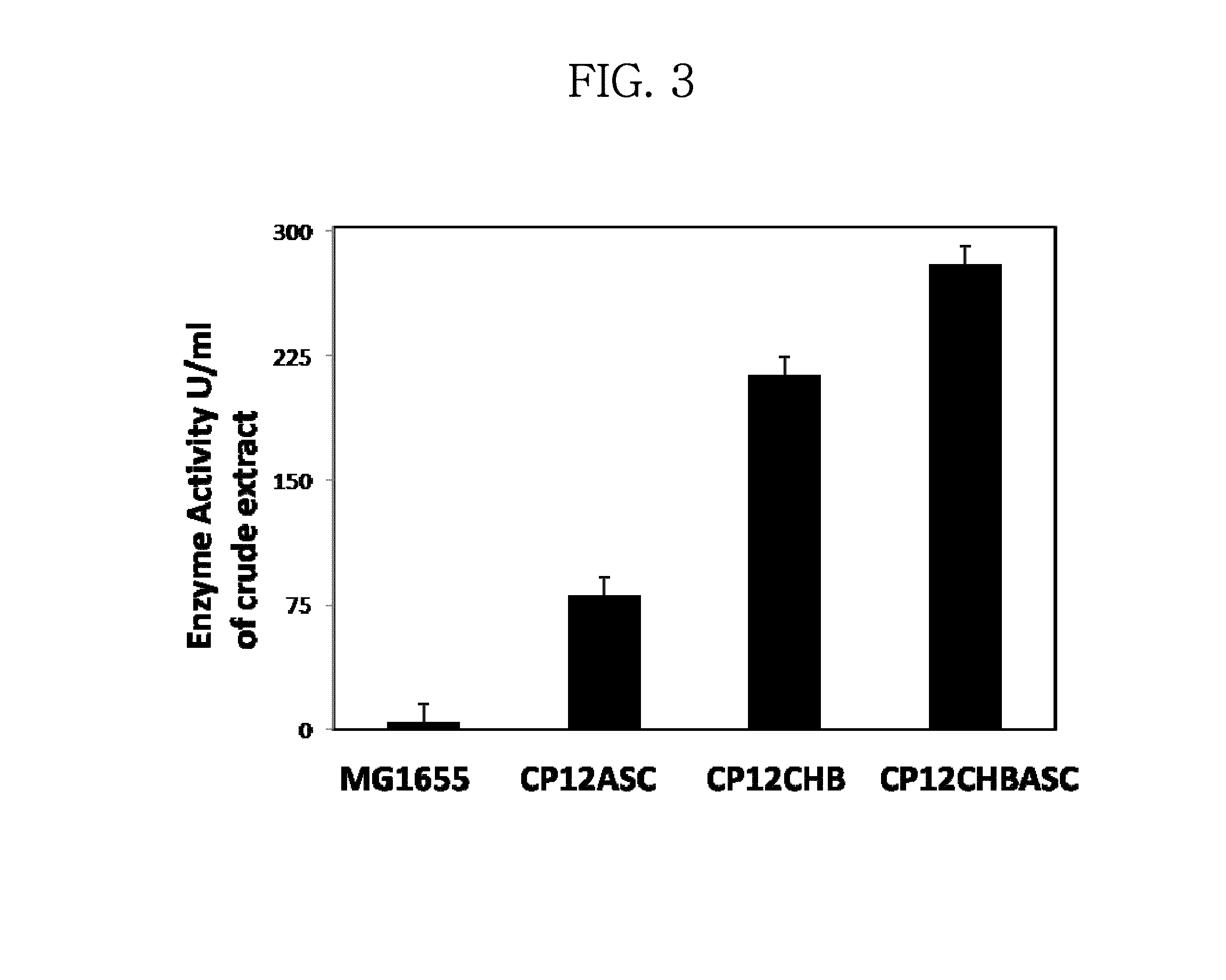Mutant microorganism with enhanced sugar utilization and methods for preparing the same
a technology of enhanced sugar utilization and microorganisms, applied in microorganisms, biochemical apparatus and processes, enzymes, etc., can solve the problems of reducing the expression level of saccharifying enzymes as heterogenous genes, hot issues in the development of alternative energy sources, and achieving the effect of enhancing sugar utilization
- Summary
- Abstract
- Description
- Claims
- Application Information
AI Technical Summary
Benefits of technology
Problems solved by technology
Method used
Image
Examples
example 1
Preparation of Modified E. Coli Whose Cryptic Promoter of chb Operon is Replaced with Active Promoter
[0068]As described below, a mutant E. coli was prepared from wild-type E. coli by replacing the cryptic promoter of chb operon with a constitutive promoter (CP12), a kind of active promoter, and the mutant E. coli was designated “CP12CHB”.
[0069]The only cryptic promoter (SEQ ID NO: 1) of chb operon on E. coli MG1655 chromosome was replaced with a synthetic constitutive promoter, CP12 promoter (SEQ ID NO: 2) by using λ-Red recombination system (Datsenko et al., Proceedings of the National Academy of Sciences of the United States of America, 97(12), 6640-6645, 2000). The CP12 promoter is described in Jensen P R et al., Appl. Environ. Microbiol. 64(1), 82-87, 1998), and is reported to have β-galactosidase activity of 101 miller unit in E. coli.
[0070]Specifically, for promoter replacement, two overlapping fragments were amplified via Splice Overlap Extension (SOE) PCR to allow the CP12 ...
example 2
Preparation of Modified E. Coli Whose Cryptic Promoter of asc Operon is Replaced with Active Promoter
[0072]As described below, a mutant E. coli was prepared from wild-type E. coli by replacing the cryptic promoter of asc operon with a constitutive promoter (CP12), a kind of active promoter, and the mutant E. coli was designated “CP12ASC”.
[0073]The only cryptic promoter (SEQ ID NO: 3) in asc operon found on chromosome of E. coli MG1655 was replaced with the synthetic constitutive promoter, CP12 promoter (SEQ ID NO: 2), in a similar manner with Example 1.
[0074]Specifically, for promoter replacement, two overlapping fragments were amplified via Splice Overlap Extension (SOE) PCR to allow the CP12 promoter to be connected with the kanamycin cassette, as described in Datsenko et al. Fragment 1 has the constitutive CP12 promoter in the downstream region of asc operon by using three SOEing CP12 promoters (SEQ ID NOs: 4 to 6) listed in the TABLE 1 and carrying a homologous sequence that can...
example 3
Preparation of Modified E. Coli Whose Cryptic Promoters of chb Operon and asc Operon are Replaced with Active Promoters
[0076]As described in Example 1 and 2, a mutant E. coli was prepared from wild-type E. coli by replacing the cryptic promoters of chb operon and asc operon with constitutive promoters, and the mutant E. coli was designated “CP12CHBASC”.
PUM
 Login to View More
Login to View More Abstract
Description
Claims
Application Information
 Login to View More
Login to View More - R&D
- Intellectual Property
- Life Sciences
- Materials
- Tech Scout
- Unparalleled Data Quality
- Higher Quality Content
- 60% Fewer Hallucinations
Browse by: Latest US Patents, China's latest patents, Technical Efficacy Thesaurus, Application Domain, Technology Topic, Popular Technical Reports.
© 2025 PatSnap. All rights reserved.Legal|Privacy policy|Modern Slavery Act Transparency Statement|Sitemap|About US| Contact US: help@patsnap.com



